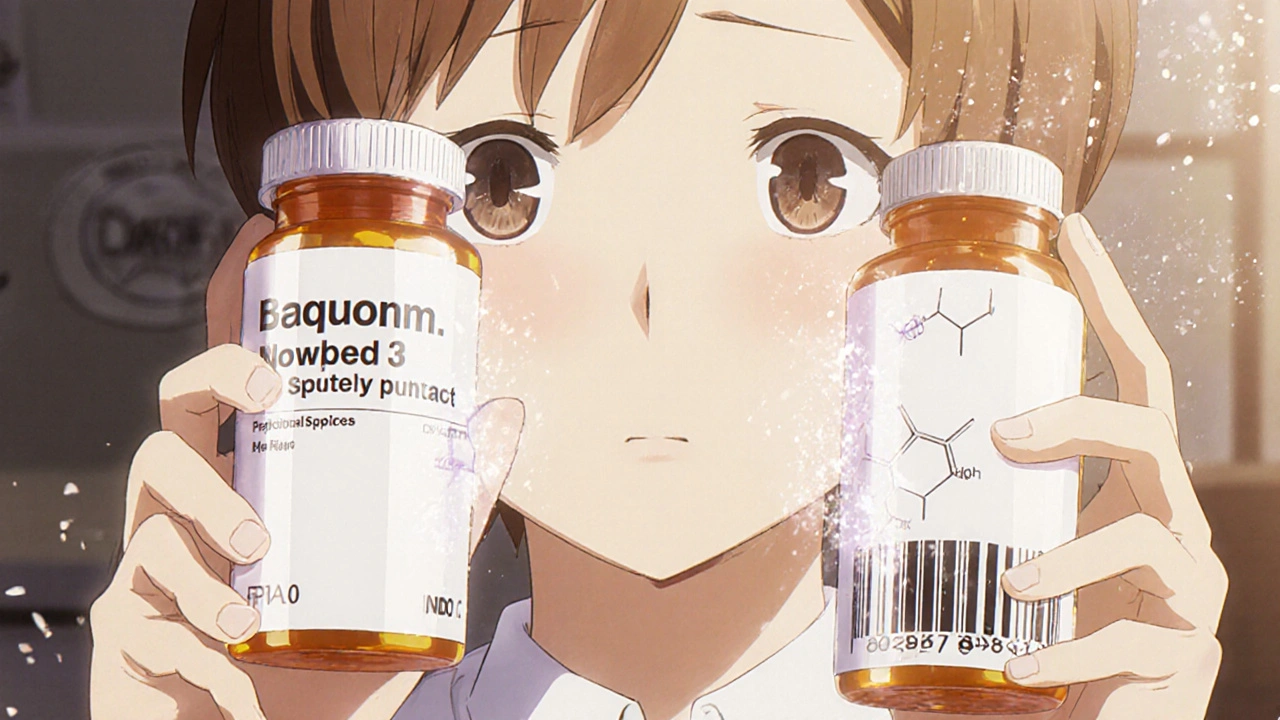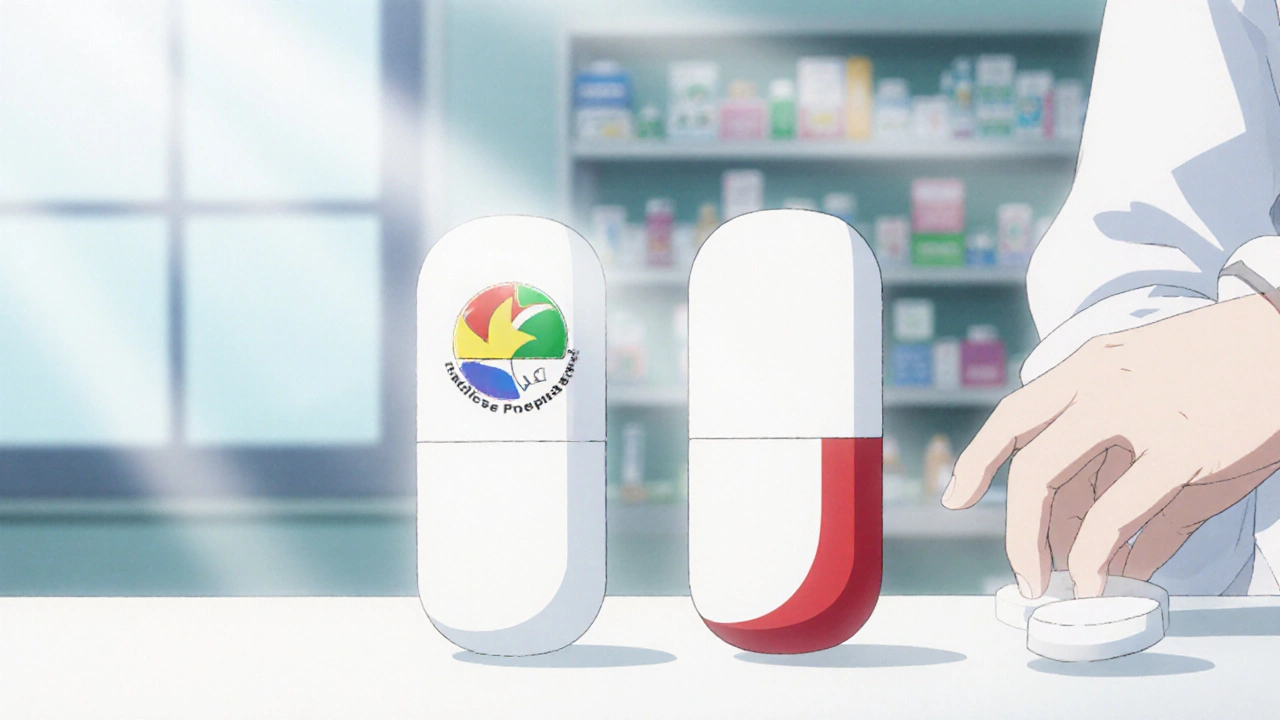When you pick up a prescription, you might see two pills that look almost identical-one with a familiar brand name, another with no name at all. You might wonder: is the unnamed one just as good? The answer isn’t as simple as it seems, especially when you’re dealing with authorized generics.
What exactly is an authorized generic?
An authorized generic is the exact same drug as the brand-name version, made by the same company, in the same factory, using the same ingredients. The only difference? It doesn’t carry the brand name on the label. Think of it like buying a soda in a plain bottle instead of the colorful can-you’re getting the same liquid, just without the logo. The U.S. Food and Drug Administration (FDA) defines it clearly: authorized generics are approved under the original brand’s New Drug Application (NDA). That means they’re not just similar-they’re identical in active ingredients, strength, dosage form, and even inactive ingredients like fillers and dyes. This is different from regular generics, which must prove they work the same way (bioequivalence) but can have different non-active components. You won’t find authorized generics listed in the FDA’s Orange Book, the official directory of approved generics. That’s because they’re not approved under the Abbreviated New Drug Application (ANDA) process. Instead, they’re marketed under the brand’s original approval. So if you’re checking the Orange Book for your medication, you won’t see them. But that doesn’t mean they’re not real or safe-it just means they’re tracked differently.Why do authorized generics exist?
Brand-name drug makers don’t usually make authorized generics out of generosity. It’s a business move. When a patent expires, other companies can start making cheaper versions. To keep some control over the market, the original company may launch its own generic version-often at a lower price than the brand, but sometimes higher than other generics. This lets them keep customers who are nervous about switching to a totally different-looking pill. Patients often worry that generic drugs might not work the same, especially for medications where small changes matter-like thyroid medicine, seizure drugs, or birth control. In those cases, the inactive ingredients can affect how the drug is absorbed. Authorized generics remove that fear entirely because they’re chemically identical to the brand. A 2018 study tracked over 5,000 patients who switched from brand-name drugs to generics. Those who switched to authorized generics had nearly the same rates of hospital visits, emergency room trips, and medication discontinuation as those who stayed on the brand. Even the small differences in emergency visits (0.25 per year for authorized generics vs. 0.22 for regular generics) weren’t meaningful in real-world terms.Authorized generics vs. regular generics: what’s the real difference?
It’s easy to confuse authorized generics with regular generics. Here’s the breakdown:- Authorized generics: Made by the brand company. Same active and inactive ingredients. Same manufacturing process. Same pill shape and color (sometimes). No brand name on the label.
- Regular generics: Made by a different company. Must match the brand in active ingredients and performance (bioequivalence), but can use different fillers, dyes, or coatings. Often cheaper than authorized generics.

Are they cheaper than brand drugs?
Yes-but not always as cheap as regular generics. Authorized generics usually cost less than the brand-name version, often by 20-40%. But regular generics can be even cheaper, sometimes 80-85% off the brand price. So if cost is your only concern, a regular generic might be the better deal. But if you’ve had trouble with regular generics-like feeling different after switching, or your doctor warning you about formulation changes-authorized generics are a smart middle ground. They’re not always the cheapest, but they’re the most predictable. Pharmacists often don’t automatically substitute an authorized generic unless you ask. Insurance plans may favor the lowest-cost generic, even if it’s not the same formulation. That’s why it’s important to know what you’re getting. Ask your pharmacist: “Is this an authorized generic?” If they don’t know, ask to speak to someone who does.What do experts say?
The FDA, the American Managed Care Pharmacy Association, and leading pharmacists all agree: authorized generics are therapeutically equivalent to brand-name drugs. Dr. Janet Woodcock, former head of the FDA’s drug evaluation center, said they provide “the same therapeutic effect as the brand-name product.” Some experts, like Dr. Philip Albrecht from the University of Maryland, point out that even authorized generics can have minor batch differences. But he also stresses that the FDA requires every batch-brand, authorized generic, or regular generic-to meet the same high-quality standards. If a batch doesn’t pass, it’s destroyed. The real issue isn’t safety or effectiveness-it’s perception. Many patients and doctors still believe “brand = better,” even when there’s no scientific basis for it. Authorized generics help bridge that gap. They give people the same drug they’ve always trusted, just without the price tag.How to spot an authorized generic
You won’t see the brand name on the label. But here’s how to tell:- Check the pill’s appearance. If it looks exactly like the brand-name pill, it’s likely an authorized generic.
- Look at the National Drug Code (NDC). Authorized generics have different NDCs than the brand, even though they’re the same product.
- Ask your pharmacist. They can tell you if the medication is an authorized generic based on the manufacturer and NDC.
- Check the manufacturer name. If it’s the same company that makes the brand (like Pfizer, AbbVie, or Teva), it’s probably an authorized generic.

When should you choose an authorized generic?
You should consider an authorized generic if:- You’ve had issues with regular generics-side effects, reduced effectiveness, or feeling “off” after switching.
- You’re on a medication with a narrow therapeutic index (like warfarin, levothyroxine, or seizure drugs).
- Your doctor recommends sticking with the exact formulation for stability.
- You’re comfortable paying a bit more for peace of mind.
What’s changing in 2025?
The FDA’s Generic Drug User Fee Amendments (GDUFA) III, rolled out in 2022, is pushing for more transparency around authorized generics. That means better tracking, clearer labeling, and more information for patients and providers. By 2028, experts predict authorized generics will make up 5-7% of the generic drug market-mostly for complex, high-risk medications. Still, there’s controversy. Some brand companies have been accused of using authorized generics to delay competition. They’ll launch their own generic version right when a patent expires, making it harder for other companies to enter the market. The Government Accountability Office flagged this tactic in 2020. But the FDA continues to allow it, as long as the product meets all safety and quality standards.Bottom line
Authorized generics aren’t a trick. They’re not a marketing ploy designed to fool you. They’re the exact same drug you’ve been taking, just sold without the brand name. For patients who’ve had bad experiences with regular generics-or who simply want the most predictable option-authorized generics are a reliable, safe, and often affordable choice. You don’t need to pay brand prices to get brand quality. Sometimes, all you need is the right label.Are authorized generics as safe as brand-name drugs?
Yes. Authorized generics are made by the same company, in the same facility, using the same ingredients and manufacturing process as the brand-name drug. The FDA requires them to meet the same strict quality and safety standards. There is no difference in safety profile between an authorized generic and its brand-name counterpart.
Why aren’t authorized generics listed in the FDA’s Orange Book?
The Orange Book only lists drugs approved through the Abbreviated New Drug Application (ANDA) process. Authorized generics are approved under the original brand’s New Drug Application (NDA), so they’re not included. That doesn’t mean they’re not approved-it just means they’re tracked differently. They’re still fully FDA-approved and legally marketed.
Can I switch from a brand to an authorized generic without consulting my doctor?
Technically, yes-authorized generics are therapeutically equivalent. But it’s always best to inform your doctor or pharmacist when switching medications, even if they’re identical. This ensures your records are accurate and helps avoid confusion if side effects occur. For high-risk medications, your doctor may prefer you stay on the same formulation.
Are authorized generics cheaper than regular generics?
Usually not. Authorized generics are often priced lower than the brand-name version but may cost more than regular generics. Regular generics are typically the cheapest option because they’re made by multiple competing manufacturers. Authorized generics offer consistency, not necessarily the lowest price.
How do I know if my prescription is an authorized generic?
Ask your pharmacist. They can check the manufacturer and National Drug Code (NDC) to confirm. If the pill looks identical to the brand and the manufacturer is the same company that makes the brand, it’s likely an authorized generic. You can also look for the absence of a brand name on the label.


Graham Holborn
Hi, I'm Caspian Osterholm, a pharmaceutical expert with a passion for writing about medication and diseases. Through years of experience in the industry, I've developed a comprehensive understanding of various medications and their impact on health. I enjoy researching and sharing my knowledge with others, aiming to inform and educate people on the importance of pharmaceuticals in managing and treating different health conditions. My ultimate goal is to help people make informed decisions about their health and well-being.